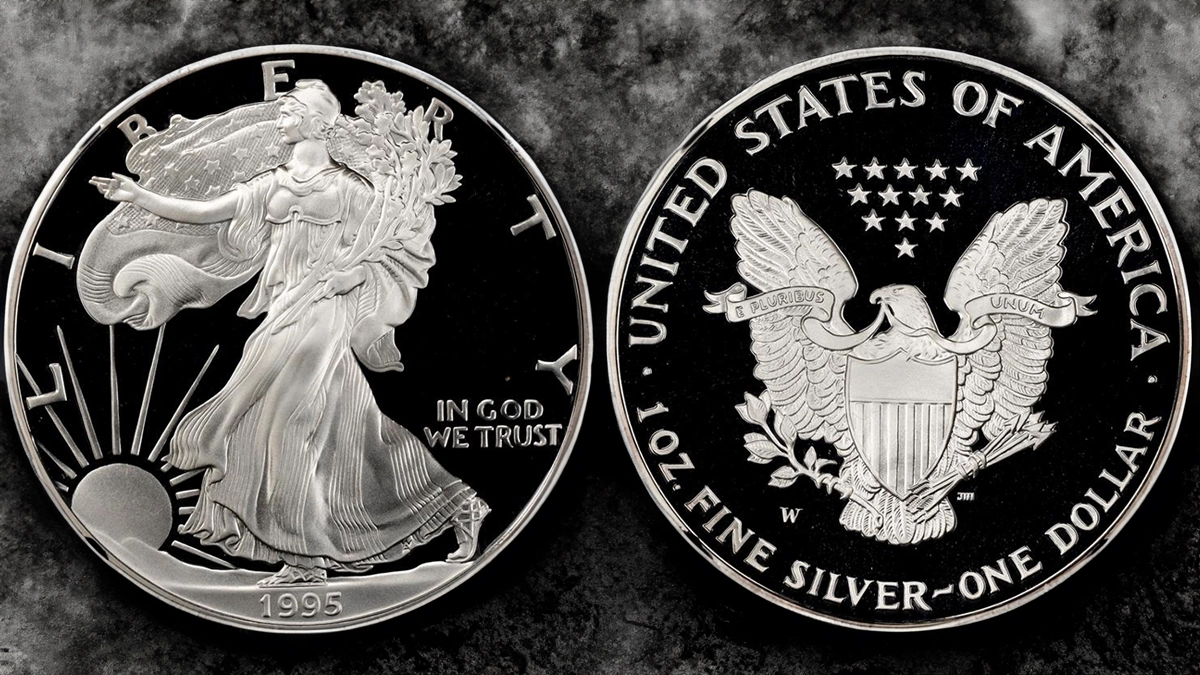By CoinWeek…
The last half-century has been an era of historic transformation for U.S. coinage. Beginning with a single nationwide celebration and progressing into a multi-decade exploration of American history, geography, and innovation, this period has fundamentally changed what symbols and statements Americans find in their pockets. For nationwide coin design, it has largely been a postmodern age.
The numismatic journey from the 1976 Bicentennial to the eagerly anticipated 2026 Semiquincentennial has been marked by bold designs, new alloys, discussions about the continued circulation of the cent, and an ever-evolving public passion for collecting.
The 1976 Bicentennial Coinage and the Return of the Commemorative Coin

The genesis of modern commemorative circulating coinage in the U.S. lies squarely with the 1976 Bicentennial. Authorized by Congress, the Washington Quarter, Kennedy Half Dollar, and Eisenhower Dollar received one-year-only reverse designs to honor the nation’s 200th anniversary.
- Dual Dating: All three coins bore the unique dual date “1776–1976” on the obverse, a direct and lasting patriotic statement.
- The Designs: The quarter featured a Colonial drummer; the half dollar showed Independence Hall; and the dollar depicted the Liberty Bell superimposed on the Moon.
- Significance: Although struck in massive quantities, these coins marked the first time the U.S. Mint temporarily redesigned circulating denominations for a national anniversary. They introduced millions of Americans to the concept of finding collectible treasures in their daily change, paving the way for everything that followed. The Mint also produced premium collector versions in 40% silver.
The Great Experiment: Most Interesting Coins Since 1976
After the success of the Bicentennial, the U.S. Mint and Congress launched several programs that broadened the scope of American coinage, moving far beyond the presidential portraits. These key developments defined the decades that followed:
The Small Dollar: From SBA to Sacagawea and beyond…
The late 1970s and 2000s saw persistent, though ultimately unsuccessful, attempts to popularize a small-sized dollar coin.
The Susan B. Anthony Dollar was the first circulating U.S. coin to feature a non-allegorical female figure. The coin was a spectacular failure, its compromised design (originally intended to be hendecagon, or 11-sided, in shape) having been made round at the insistence of the vending machine industry. This disastrous decision caused public confusion, with many mistaking the dollar coin for the quarter.
As a budget collectible, the Susan B. Anthony Dollar has its followers and offers interest through its rim and mintmark varieties.

Nearly twenty years after the Anthony Dollar debacle, Congress tried again, authorizing the production of a golden dollar honoring the Shoshone explorer Sacagawea. From a design perspective, the Sacagawea Dollar was a success, but it was doomed yet again by a failure of the Mint and Treasury to fully support the denomination post-launch, coupled with Congress’s unwillingness to eliminate the one-dollar bill. Despite its circulation failure, the series yielded legendary rarities, such as the recently auctioned space-flown 2000-W gold versions, a rare variety found in boxes of Cheerios, and error coins (or “mules”) struck with a mismatched Washington Quarter die.
Since the release of the Sacagawea Dollar, the Mint has introduced dollar coins honoring America’s Presidents and key inventions.
The Quarters Revolution: New Themes and Huntable Varieties
Starting in 1999, the quarter became the primary vehicle for telling America’s stories through coins. Since this time, no quarter reverse design has repeated year-after-year.

The State Quarters Program (1999–2008): This wildly popular series, honoring a state’s unique history and landmarks on the quarter’s reverse, brought millions of non-collectors into the hobby and demonstrated the public appetite for circulating commemorative designs. Those who set these coins aside as investments largely lost interest as the series dragged on.
The “W” Quarters (2019–2020): A more recent phenomenon, the U.S. Mint released two million of each annual quarter design with the “W” mint mark of the West Point Mint directly into circulation. These “Great American Coin Hunt” issues, especially the 2020 coins featuring a special V75 privy mark (for the 75th Anniversary of World War II victory), became instant, high-value collectibles.
Dominating the Bullion Market: The American Eagle Bullion Coin Program

A decade after the Bicentennial, a different type of collector and investor was excited by the launch of the American Eagle Bullion Coin Program. This program marked the U.S. Mint’s official entry into the global precious metals market.
Investor Appeal: Authorized by the Gold Bullion Coin Act of 1985 and the Liberty Coin Act of 1986, these coins—initially the American Gold Eagle and Silver Eagle—provided a secure, government-backed way for Americans to invest in physical precious metals. They are guaranteed by the U.S. government for weight and purity, making them a trusted store of value against economic uncertainty.
Collector Excitement (The Art and History): The coins became instant classics due to their designs:
- The American Gold Eagle features Augustus Saint-Gaudens’ iconic Lady Liberty from the $20 Double Eagle (1907-1933).
- The American Silver Eagle features Adolph A. Weinman’s renowned Walking Liberty design, revived from the 1916–1947 half dollar.
The Numismatic Edge: Beyond bullion, special Proof and Uncirculated versions are released annually, and highly rare varieties—like the 1995-W Proof Silver Eagle—command high premiums, proving that the blend of precious metal and artistic heritage is a powerful draw for collectors.
Previewing the 2026 Semiquincentennial Coinage
The Circulating Collectible Coin Redesign Act of 2020 has set the stage for a numismatic celebration in 2026, the Semiquincentennial (250th) anniversary, that will surpass the 1976 Bicentennial in scope and ambition.
A Full-Scale Redesign for All Circulating Coins
For the first time since 1976, every circulating coin—the Cent, Nickel, Dime, Quarter, Half Dollar, and Dollar—will feature a special one-year-only design.
Dual Dating for All: Just like the 1976 coins, all 2026 issues will bear the “1776–2026” dual date.

Thematic Quarters: The quarter program will feature five distinct reverse designs for the year, each focused on a crucial American “inflection point”: The Declaration of Independence, the U.S. Constitution, Abolitionism, Suffrage, and the Civil Rights Movement. Designs reviewed have featured compelling imagery, including one quarter honoring Civil Rights activist Ruby Bridges.
The “Best of the Mint” Collection

In a simultaneous effort, the Mint will release a special collector series that reimagines classic U.S. numismatic art.
Gold Reissues: Iconic designs like the 1804 Dollar, the 1916 Standing Liberty Quarter and the 1916 Walking Liberty Half Dollar will be struck in 24-karat gold with their original issue dates.
The “250” Privy Mark: To tie the collection to the anniversary, each of these reissues will feature a small Liberty Bell privy mark inset with the number “250,” ensuring these modern classics are forever linked to the nation’s 250th birthday.
The 2026 coinage represents the culmination of a half-century of numismatic experimentation. It is poised to be the most historically significant and widely sought-after series since the nation’s founding, marking a generational milestone for collectors and the public alike.
* * *
The post From the Bicentennial to the Semiquincentennial: A Look Back at 50 Years of Coins appeared first on CoinWeek: Rare Coin, Currency, and Bullion News for Collectors.
